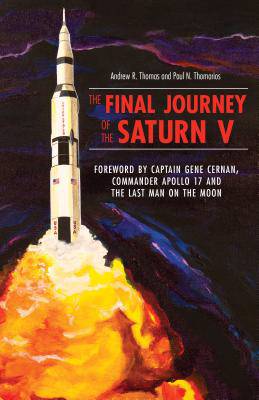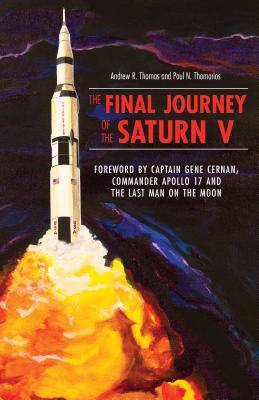
- Afhalen na 1 uur in een winkel met voorraad
- Gratis thuislevering in België vanaf € 30
- Ruim aanbod met 7 miljoen producten
- Afhalen na 1 uur in een winkel met voorraad
- Gratis thuislevering in België vanaf € 30
- Ruim aanbod met 7 miljoen producten
Zoeken
€ 34,95
+ 69 punten
Omschrijving
The Saturn V can be considered one of mankind's greatest achievements. The outcome of President Kennedy's 1961 call to put a man on the moon, the Saturn V is a technological marvel that stood more than 36 stories tall. An enormous workforce of engineers, scientists, welders, barge captains, and computer programmers spent an untold number of hours on design, logistics, manufacturing, quality control, and more to launch the Saturn. Neil Armstrong's giant leap for mankind was the culmination of a focused effort to beat the Soviets and prove American ingenuity and productivity was beyond doubt. Unfortunately, the demise of the Apollo program was just as shattering as the force it took to launch the rocket into orbit. A few years after the Eagle had landed, the unused Saturn launch vehicles were left outside to rot. Like the space program itself, the rocket was forgotten and its carcass soon became home to flora and fauna.In hopes not only to resurrect the physical rocket, but also to bring the complete moon adventure back to life, the Smithsonian Institute and other prominent partners laid out plans to create a total mission experience destination at Kennedy Space Center. A key component of the plan was the complete restoration of the Saturn V. Of course, getting the rotted superstructure back into shape was not going to be easy. After much bidding and decision-making, Paul Thomarios, owner of a painting and coating company in Akron, Ohio, was selected for the job. Fittingly, the same ethics of hard work and innovation that drove the race to the moon were exhibited by Thomarios and his crew as they worked to bring one of America's greatest achievements back to prominence.
Specificaties
Betrokkenen
- Auteur(s):
- Uitgeverij:
Inhoud
- Aantal bladzijden:
- 156
- Taal:
- Engels
Eigenschappen
- Productcode (EAN):
- 9781931968997
- Verschijningsdatum:
- 15/04/2012
- Uitvoering:
- Hardcover
- Formaat:
- Genaaid
- Afmetingen:
- 145 mm x 221 mm
- Gewicht:
- 362 g

Alleen bij Standaard Boekhandel
+ 69 punten op je klantenkaart van Standaard Boekhandel
Beoordelingen
We publiceren alleen reviews die voldoen aan de voorwaarden voor reviews. Bekijk onze voorwaarden voor reviews.











